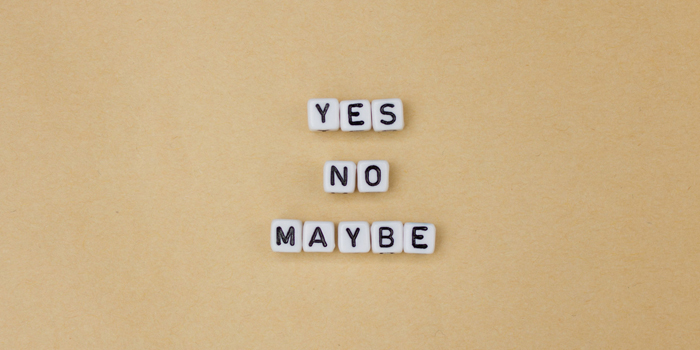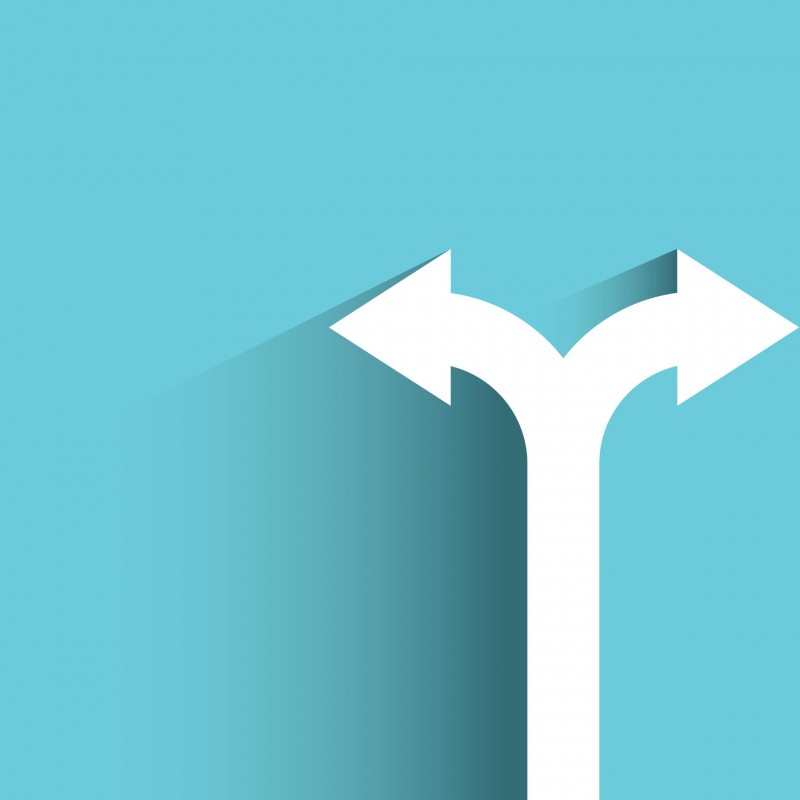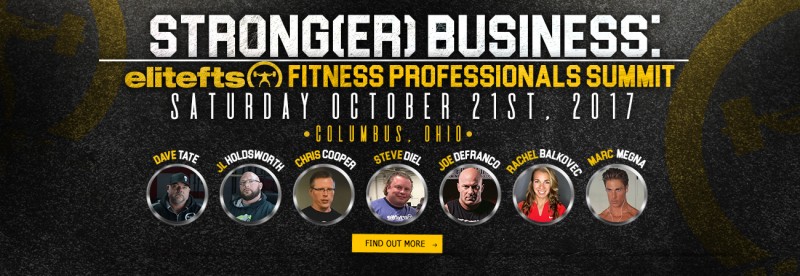
My first sales training was in cold-calling. After a warm winter at a local ski hill, all the managers were instructed to call ski clubs within a three-hour drive and try to book their group for the following year. We wanted to sign them up early before they second-guessed their travel plans for the following year.
Of course, none of us wanted to make cold calls — we wanted to ski and be paid for it. I was in my early 20s with zero sales experience and was still carrying most of the shyness from my youth. I was so terrified of the phone that I started looking for a new job.
RELATED: An Introduction to Affinity Marketing — F Your Funnel
My boss brought in a sales coach. He taught us closing techniques and calling openers, but also something useful: the "maybe" problem.
His message was this:
"When someone says yes, great. Sign them up. But when someone says no, that's also good, because you can move on to the next person with a clear head. When someone says maybe, that is a problem, because you're going to spend a lot of energy trying to get them to yes. And many people say maybe because they have a hard time saying no."
His point was that we should get through our call list as quickly as possible, encouraging people to make decisions and then moving to the next. It didn't really work for selling ski vacations, but it's definitely helped me grow my gym, even if I don't use the "maybe" mindset exactly the way the sales coach intended.
Sometimes the best thing we can do for a client—or staff person, or child—is to make a decision for them. In fact, that's the truth that few will admit: we all have to make too many decisions. We're not very good at making decisions. We're paralyzed by choice. And decisions cause us stress.
Removing that stress is one of the best things you can do for someone.
Here's an example: Last night, a nine-year-old on my son's lacrosse team was assigned to defense. He's a great defenseman but would prefer to play offense because he likes to score goals like everyone else. He asked the door coach, "Can I play offense on the next shift?" The door coach said, "Maybe. I'll try to change things around for you."
So he spent his next shift on defense distracted by the possibility of playing offense. He lost his position because he tried to run too far toward the goal, and then got burned by a pass right over his head. He came off dejected, but asked again, "Can I play offense next shift?"
I said, "No. This is an important game, and you're great at defense. The team is counting on you. Are you ready to make a difference?"
He said, "Yes. No problem." And he played his best game of the year.
Photo courtesy of ppbig © 123RF.com
Here are five scenarios where YOU can help someone by giving them a clear black-and-white, yes-or-no choice:
1. Your Pricing
If you present nine different membership options to a prospective client, they'll probably choose none. If you want to help a person get fit and live longer, give them two or three options. You can have nine—or 90—different membership options. But your job is to say, "This one is best for you."
2. Your Website
Give people very clear actions to take. Click here. Sign up. Don't get fancy. Don't ask them to navigate. Show them the path.
3. Your Sessions
Start them at the same exact time every time. If class starts at 12:04, I'll arrive at 12:03. If it starts at 12:00, I'll be there at 11:59. I'm not the only one. When a gym owner asks how to make people show up on time the answer is always, "Start the class on time and they will."
4. Your Clients
Rather than fight to keep a negative client around, let them go. If a client is loudly protesting your rate correction, that's fine — they can protest somewhere else. Fighting to keep them around won't make them happy, won't make you happy, and will probably make other clients unhappy. Get them off "maybe". The customer is always right, but they don't always have to be YOUR customer. They can be right somewhere else.
5. Your Coaches
If a coach can't match your expectations, or meet your schedule, or wear your coach's shirt, let them go. You can still be their friend. They can still be your client. But they're not your coach any longer. When an affiliate owner tells me they're coaching five classes every day because "our coaches all work and can't cover more classes," I know where our mentorship conversation will start.
The job should be clear to everyone: "We need a coach from five until seven on weekdays. You'll arrive 15 minutes early and expect to stay 15 minutes late. You'll follow this class template. And we'll have a coaches' meeting on the first Saturday of every month. Here's what we pay our coaches. Can you do it?"
The biggest favor you can do for your clients, staff, and family is to get them off "maybe."
Giving a five-year-old a choice between two water slides doesn't help her because she'll spend too much time deciding which is "better" and less time sliding. Present one choice at a time: "Do you want to ride THAT waterslide?" If the answer is yes then go get in line. If the answer is no then line up for the other water slide. Get us all off "maybe" and onto enjoyment — or at least on to the NEXT thing.
Chris Cooper is the author of Two-Brain Business, Two-Brain 2.0 and Help First. A former powerlifter, Cooper opened Catalyst Fitness in 2005 after a decade in the fitness industry. The gym almost bankrupted him. When he realized that being a good coach didn’t make him a good business owner, he found a mentor and began his REAL education. He now owns two gyms (and three other companies, as well as a few buildings) in Sault Ste. Marie, Ontario. Since 2010, Cooper has published over 1000 free blog posts. His new site is twobrainbusiness.com, and his podcast is TwoBrainRadio.
Header image courtesy of misstuni © 123RF.com










